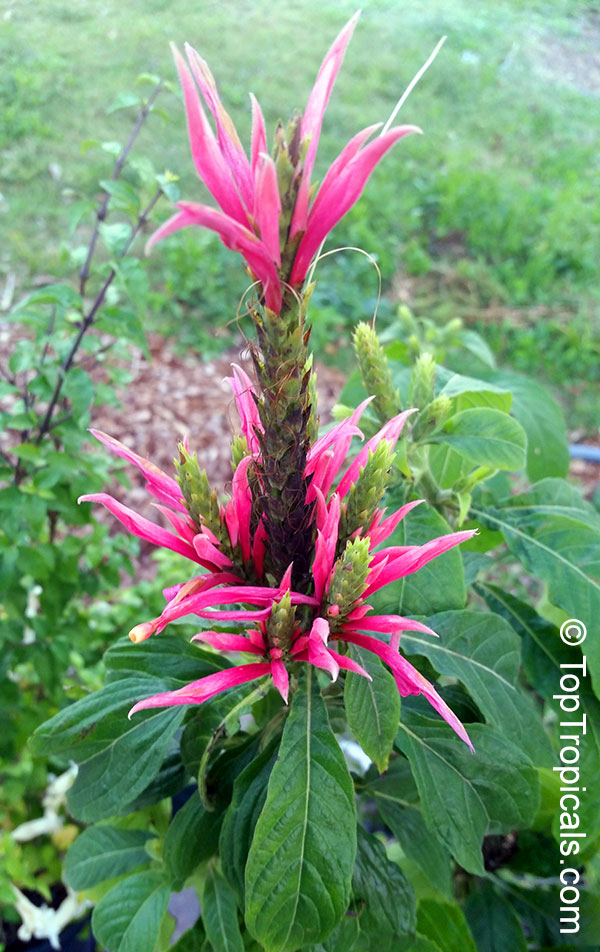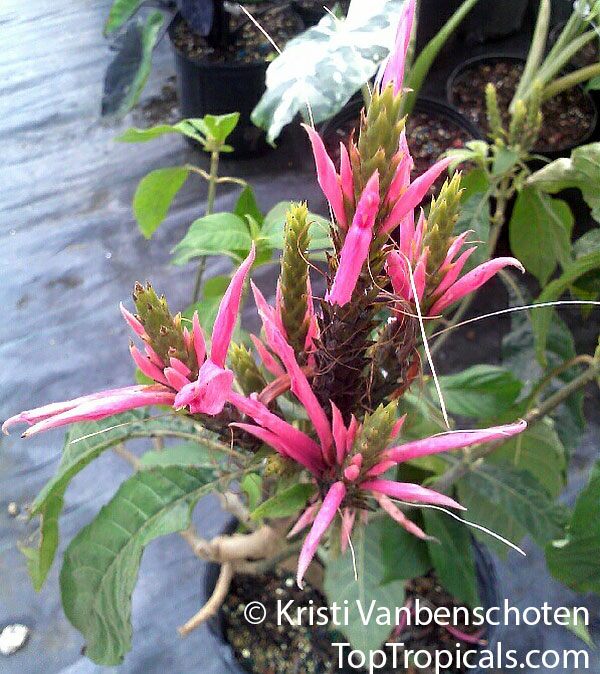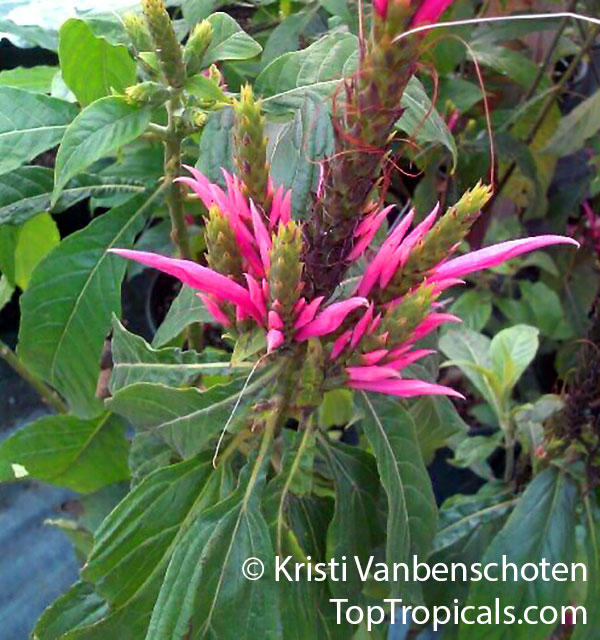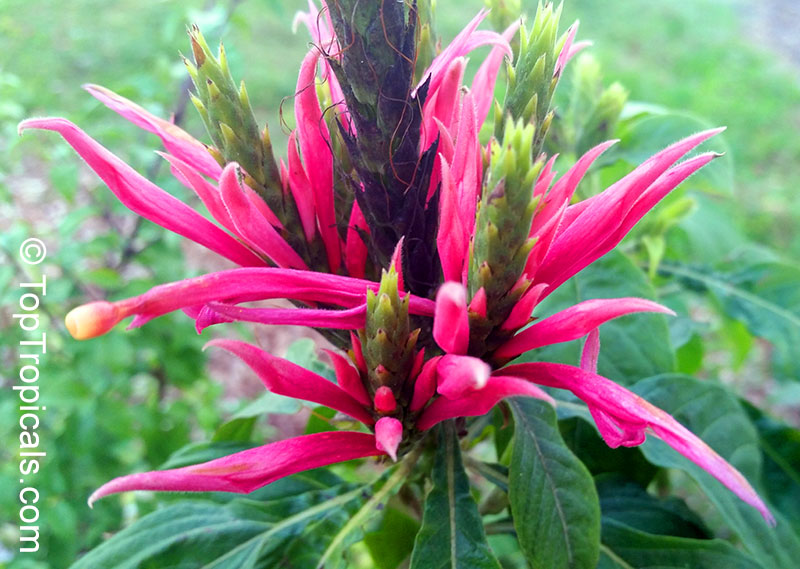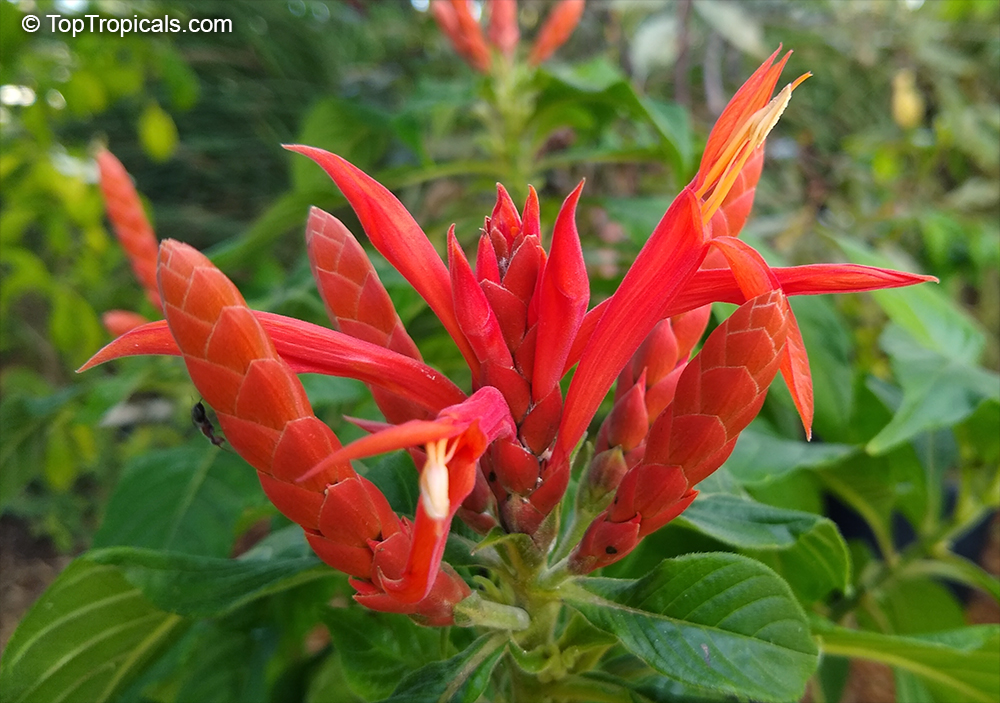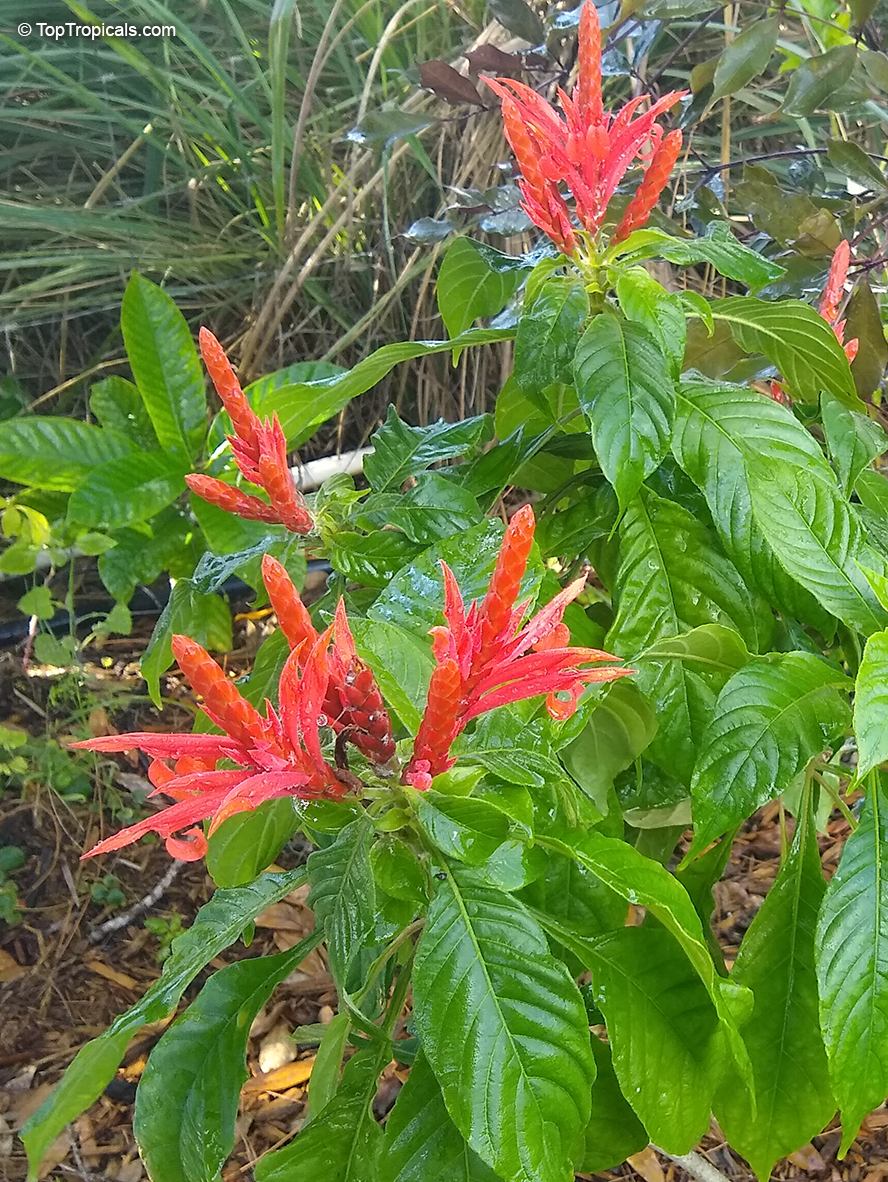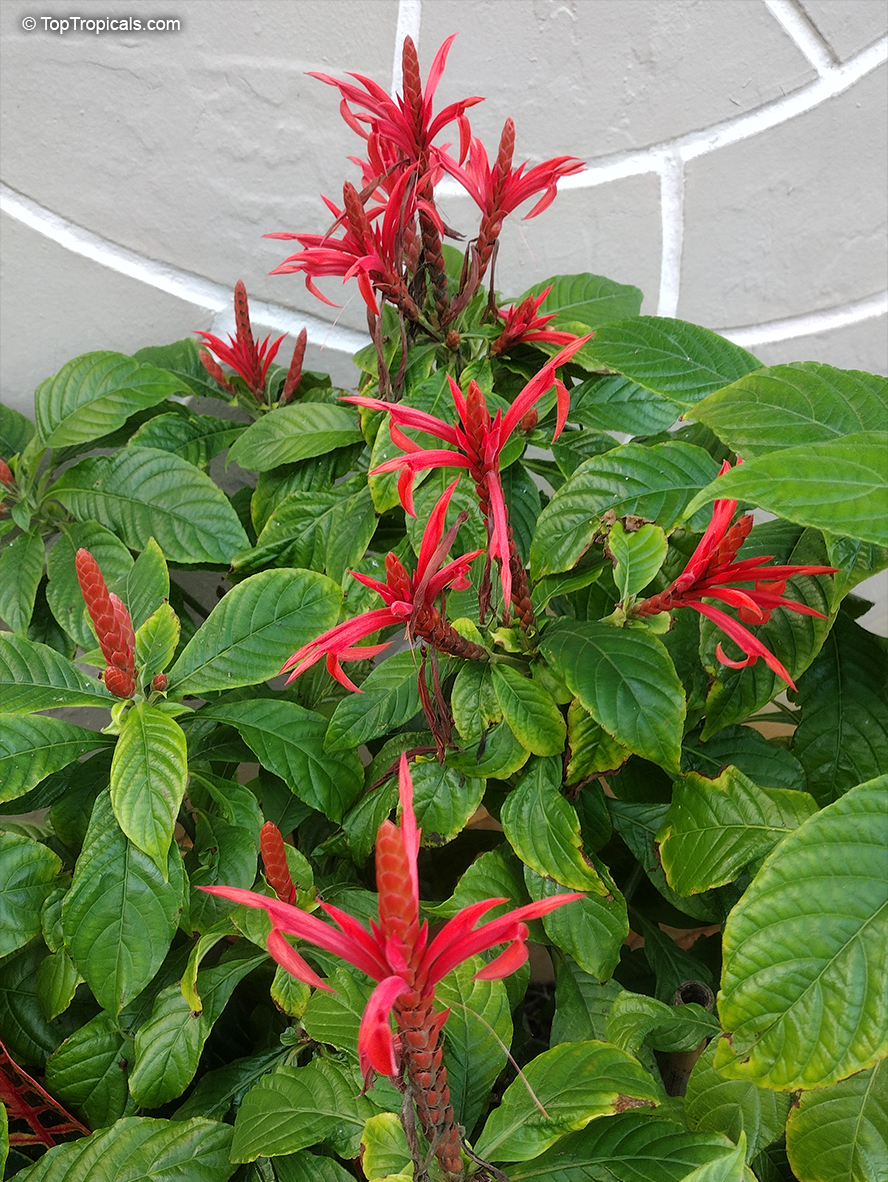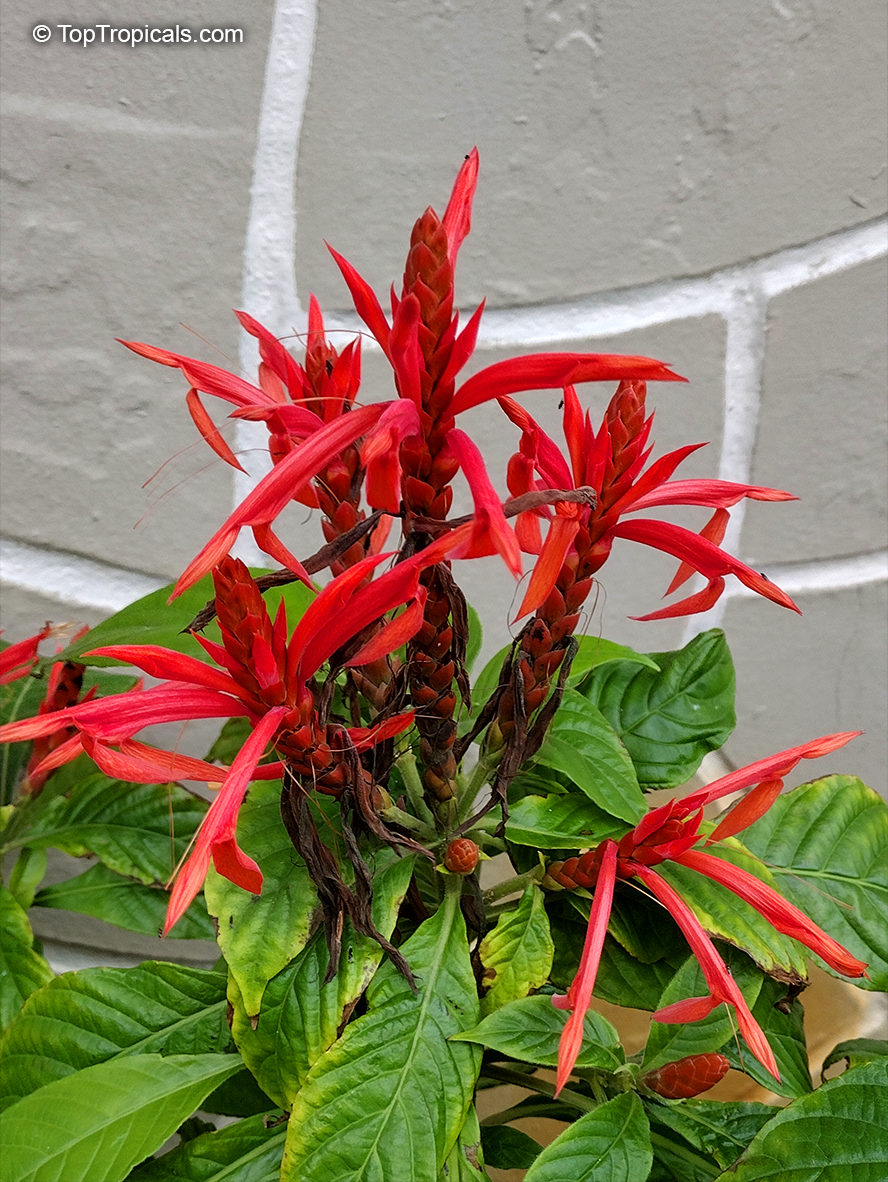Aphelandra scabra (Aphelandra)
Top Tropicals Plant Encyclopedia
Botanical names: Aphelandra scabra, Aphelandra panamensis
Common name: Aphelandra
Family: Acanthaceae
Origin: Southern Mexico to Northern South America









Aphelandra scabra is a shrub that grows up to 5 ft tall. It is native to Southern Mexico, Northern South America, and the West Indies. It can be found in seasonally dry forests and moist to wet forests. The leaves are elliptical and entire, oppositely arranged on the stalk with smooth or wavy margins. This large shrub is easy to grow, fast-growing, and tolerant of a wide range of conditions, making it a great garden plant. Aphelandra scabra prefers full sun to light shade and regular watering. It likes moist soils but can tolerate some drought during the summer months.
Aphelandra scabra can be used as a container plant and it makes a great statement piece. It is a great addition to any outdoor living space or garden. It blooms in late spring to early summer and the flowers attract butterflies, hummingbirds, and other pollinators to the garden. Aphelandra scabra grows in USDA Zones 10 -12. For those in colder climates, Aphelandra scabra can be kept in a pot and brought inside during the winter months. It can tolerate temperatures as low as 30°F, but it is best to keep it in a warm environment when temperatures are below freezing. Regular watering is necessary, and be sure to provide plenty of light.
The flowers of this plant can be red, pink, or purple red, up to 2 inches long, and tubular. They are 2-lipped, fuzzy, and bloom for one day before wilting. The plant inflorescence is candle-like, and the prepubescent flower spikes can grow up to 6 inches in height. The flowers are hummingbird-pollinated, and the species protects its nectar behind a petal lip. When a visiting hummingbird arrives to feed on the nectar, the petal lip releases pollen down onto the head of the bird, and it is carried away to pollinate another plant. The seed capsules are 1 inch long capsules, and they contain four dark brown seeds. The fruit seed capsule splits along the sutures, allowing throw the seeds short distances.
Similar plants: Aphelandra scabra (Aphelandra)
It is a great addition to a collectible tropical butterfly garden. Can grow into 4-5" tall bushy specimen. Blooms sporadically during warm season. Tolerates both full sun or filtered light.
Recommended Fertilizer: SUNSHINE Megaflor - Bloom Nutrition Booster
